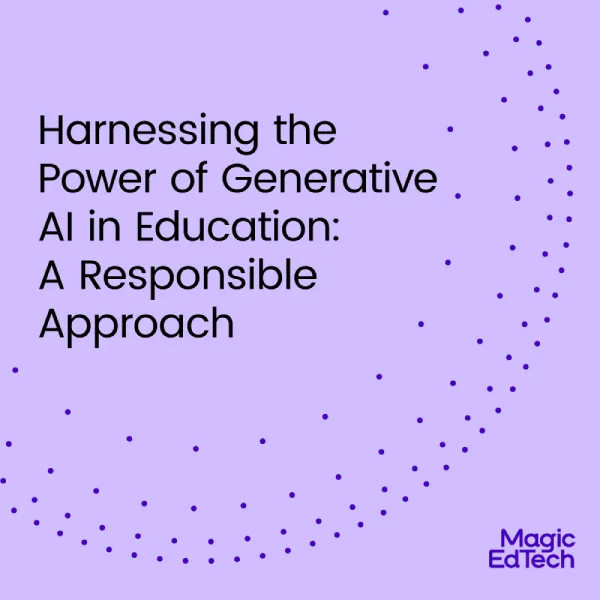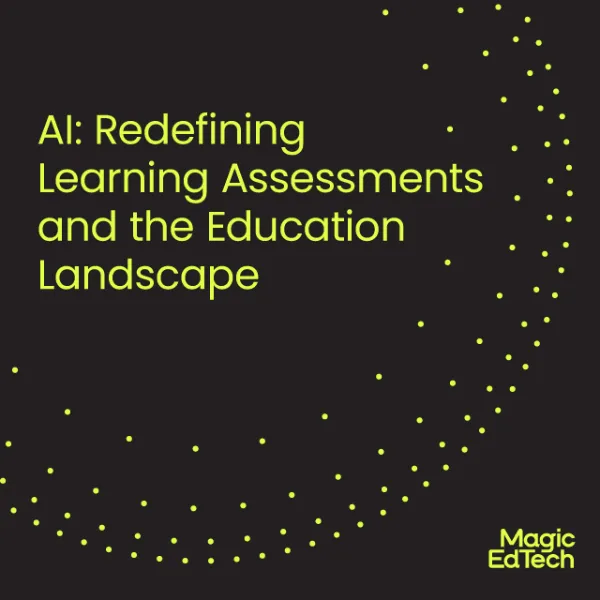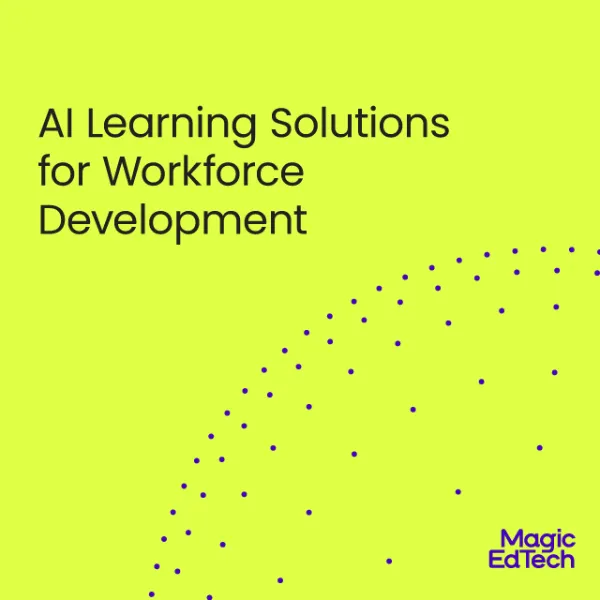AI’s Impact on Child Literacy and the Challenges Ahead
- 21 July, 2023
- Reading Time: 6 mins
In the U.S., we’ve seen a significant shift in educational practices. From traditional textbooks to comprehensive online learning platforms, the accessibility and versatility of K-12 education have been remarkably enhanced. The recent pandemic only catalyzed this digital transition. Despite all this, roadblocks such as budget constraints and student engagement persist, jeopardizing the progress in reading levels. It’s in these challenges that Magic EdTech and other innovative edtech companies see an opportunity to implement AI-powered personalized learning solutions to engage and support students better.
To cover this topic in more depth, this article discusses the main challenges, positive effects, and negative effects of AI in child literacy as it relates to instructional designers (edtech solution providers).
Child Literacy: Current Challenges
Despite there being so many resources today with technology, there are still issues that teachers and schools face, such as budget constraints and low student engagement. This is why in the U.S. we are seeing such a struggle in children being able to read well and move forward in their education.
Budget constraints are one of the biggest issues for school districts – there are many expenses, such as teacher salaries, extracurricular activities, resources and materials, and so on. According to a recent article published on ChalkBeat, an education reporting newsletter, “the vast majority of the money that schools receive come from state and local sources…Title I accounts for a small share of the several hundred billion spent on education each year. But by design, the money flows disproportionately to schools serving more students from low-income backgrounds. That means any cut to Title I would hit those schools hardest. It would also have a larger impact on schools serving more students of color.”
The article discusses a proposal by Republicans in the U.S. House of Representatives to significantly reduce funding for Title I.
The proposed bill seeks to cut Title I grants by 80% or nearly $15 billion. This is part of a broader package of GOP-backed cuts to schools and other federal programs. The bill also aims to ban the use of funding to teach “critical race theory,” though the concept is not defined in the proposal. Republicans justify these cuts by stating that some COVID relief funding provided to schools remains unspent and further investments will not be provided until these funds are used responsibly.
The proposal also seeks to eliminate Title II, which provides professional development to teachers. However, funding for the Individuals with Disabilities Education Act, which helps schools educate students with disabilities, would remain steady. The federal Charter Schools Program, which supports the expansion of charter schools, would receive a modest boost. Title I was enacted in 1965 under President Lyndon Johnson to improve the education of disadvantaged children by providing additional funding to their schools.
As for the other main challenge in education today, the lack of engagement from students stems from many factors – COVID, family struggles, peer influence, etc. However, in order to combat this, edtech companies on the rise have figured the way to success is through personalized learning, in other words, to make education more accessible for children today – through games, new immersive content, and the fact that it is virtual. In regards to this upcoming trend of online learning, there has been an emphasis on teachers still being responsible for students’ learning outcomes as they are the ones in the classroom with the children, becoming aware of each student’s learning capabilities and utilizing online resources accordingly, such as Kahoot! or Quizlet.
Positive Effects of AI on Child Literacy
AI’s ability to answer questions intelligently about various academic materials has sparked an entire trend of AI being incorporated into learning product roadmaps, whether on the back or front end. In other words, many edtech companies and schools across the nation realized the potential of this new technology, as students were beginning to explore its use in their education and creating a conversation around plagiarism.
Whenever a new technology rises, it can have positive and negative impacts. In terms of the positive effects of AI on child literacy specifically, we can look at companies like Thinkster Math, Brainly, and Nuance, to name a few. Thinkster Math is an online math learning/tutoring platform that leverages AI and human interactions to create personalized experiences. Brainly is a social media site for classroom questions, where AI can simplify or expand on answers. Lastly, Nuance is a speech recognition software used by students and faculty, capable of transcribing up to 160 words per minute. It is especially useful for students who struggle with writing or have accessibility needs. These companies have found success by using AI as a tool to help improve and simplify processes internally and/or externally.
When we look at the example of Thinkster Math, we can see how their tutoring platform grew to adopt SelectQ, an AI-driven edtech startup, and further spread its impact. According to a press release in 2020, they have expanded their content to include Honors and AP level subjects such as science and engineering and test prep such as SAT and ACT. The program allows students to receive customized training and quizzes on any subject, which challenges and improves their learning levels. Tutors are empowered to deliver high-quality learning experiences as well, using their own content or other tutors’ content, curated and available through the Thinkster platform. The platform further helps in content monetization and delivering insights on student usage & reasons for students making mistakes. Parents also have access to their child’s progress and personalized improvement plans. This approach has helped thousands of students in over 30 countries, many of whom continue to use the platform for their education.
Negative Effects of AI on Child Literacy
As for the negative effects of AI on child literacy, we can already see that there is a reduction in human interaction, especially after the pandemic. This would only increase as students become more reliant on technology, even if it is for a good cause like education. It’s crucial for children to practice a balance of using technology and staying away from it, because as an adult that will only become harder to implement in one’s life, but the impact of overusing technology is quite literally destructive.
The other largely concerning aspect of AI taking over education is the creation of a larger “digital divide.” While it is easy to dismiss because of how big the world population is today and how focused we are on our own individual lives, the reality is that not everyone has access to AI-powered learning tools. This causes some children to have a much bigger advantage than others, which does also mean those with many resources are likely to somehow impact and help the less fortunate later down the line; but, that does not make it okay to dismiss for now.
In terms of addressing these negative impacts of AI, many sources suggest that the solution lies in the hands of educators, as they learn to incorporate AI into their classrooms. I would agree that it comes down to teachers communicating with their students about the limitations and benefits of AI. It also depends on parents and their commitment to their children!
Conclusion
We are living in a world where books are as outdated as dinosaurs. I hope to spread this message of being cautious but also enthusiastic about the potential of AI, as it relates to each individual and their journey to fulfilling their dreams. I also hope that children are encouraged to read more simply by seeing it occur or hearing it more often around them, and realize the joy and opportunity that comes with it and will then inspire others to do the same. While it is a long work in progress, steps are actively being taken to improve education for all.
One great organization with this mission is called one billion. It is a non-profit based in London that has built comprehensive, scalable educational software for reading and numeracy in a variety of languages for children in countries such as Tanzania, Malawi, Kenya, and Sierra Leone, to name a few. At this non-profit, children are at the heart of everything they do, particularly those who are most vulnerable. What I love about this company is its large impact and mission, reaching over 300,000 children in third-world countries is a huge achievement, and yet, they have a goal to reach more – in every part of the globe – not to mention they are not for profit!
In conclusion, the possibilities with technology are unraveling quickly. Let’s make sure we are well-equipped to tackle any challenges by staying up-to-date and true to our core values.





